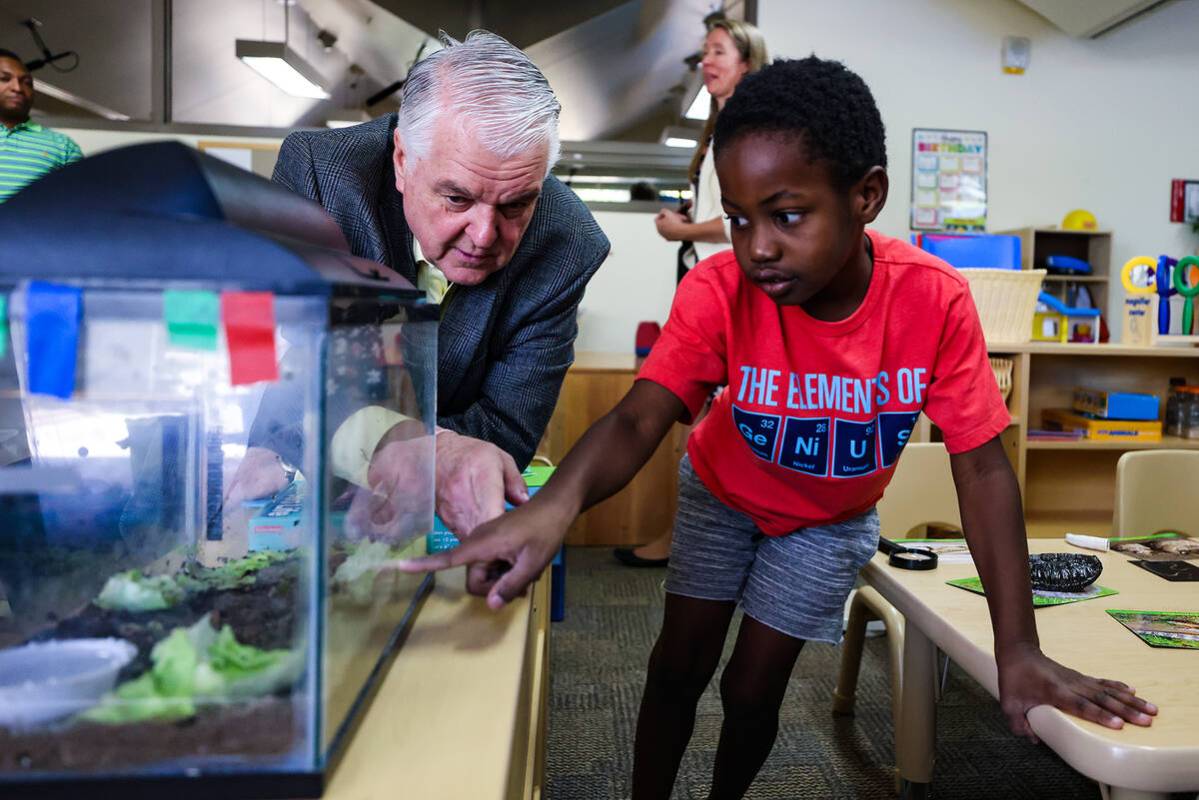Child care services in Nevada getting a $50M boost

Gov. Steve Sisolak and other state officials announced a $50 million investment Thursday to help make child care more affordable for lower-income Nevada families.
The money will go to set up the Nevada Child Care Fund, which will be used to help cover child care co-pays for families using state-subsidized child care programs.
The payments will be made on a sliding scale based on the number of children in a child care program and the income level of the family, according to Karissa Loper Machado, a manager for the child care and development program with the Department of Health and Human Services.
She also said this sliding scale would only cover a small percentage, ranging from 1 percent to 7 percent, of a family’s income.
The program will cover the federally required co-pays for any household receiving a child care subsidy through the Child Care and Development Program, according to Shannon Litz, a public information officer for the Nevada Department of Health and Human Services.
Sisolak said the $50 million investment can help families in “desperate need” of affordable child care.
“We’ve heard from so many families who had to work too hard to find adequate child care,” he said. “And often the high cost of child care means a parent has to leave the workforce not because they want to, but it’s the only way to balance the bottom line.”
This investment money will come from federal funds in the American Rescue Plan, Sisolak said. The $50 million will complement several other big projects supported by ARP federal funds. Other initiatives funded through the plan are $200 million for school districts to overcome learning loss because of the pandemic and $75 million for lunches for schools in the National School Lunch Program.
The announcement came Thursday morning outside the Early Childhood Education Lab located on the North Las Vegas Campus of the College of Southern Nevada.
Beneficial beyond child care
The investment was also touted as a way to boost education and the economy.
CSN President Federico Zaragoza said having child care facilities such as the one at CSN is important because finding this type of care can be a large obstacle for students with children.
“Child care services is one of the top barriers associated with higher education participation,” he said. “And for that matter, also workforce participation.”
Sisolak echoed that point, saying child care is a necessity for families but can be a “tremendous financial burden” for many. Such care in Nevada can come at a high price, with infant care costs on average reaching $951 a month or over $11,000 a year while care for a 4-year-old can cost $754 a month or over $9,000 a year, according to the Economic Policy Institute.
The governor has been promoting these recent investments that were recently approved by the Nevada Assembly, saying that focusing on families offers a multitude of benefits for the state.
“A robust child care system is critical to Nevada’s economy and to our state’s recovery,” Sisolak said.
More families eligible
He also touted how recent changes to the state’s child care system will increase the number of families eligible for this program. Earlier this year only families making up to 130 percent of the poverty level in Nevada could qualify for the subsidies but now any family making up to 200 percent of the poverty level can qualify for them.
“We’ve essentially doubled the amount of money a family can make annually and still be eligible for child care assistance,” said Loper Machado.
That means a family of four could qualify for the subsidies if their income was at or below $60,000 to $70,000, she said. Currently, about 5,000 families are enrolled in the child care program with an average of $551 being spent on a monthly basis for each kid in the program.
Both Sisolak and Loper Machado urged any family curious about getting these co-pay subsidies to contact their local child care referral agency or for Southern Nevada residents to contact the Las Vegas Urban League and for Northern Nevada residents to contact the Children’s Cabinet. Interested families can also reach out to the parent resource page of nevadachildcare.org website.
Because the funding comes from one-time federal funds and not ongoing revenues, the $50 million set aside to cover co-pay costs is expected to run through the end of 2023, Loper Machado said. But Sisolak emphasized that the estimated timeline is based on expectations and the funds could last longer or run out sooner than 2023.
Sisolak noted that state lawmakers should look at how to continue subsidizing co-pays for child care once the federal funds for this program run out.
He also said the state is looking to improve access to child care facilities by simplifying the licensing and legal process child care facilities must go through to begin operations.
Contact Sean Hemmersmeier at shemmersmeier@reviewjournal.com or on Twitter @seanhemmers34